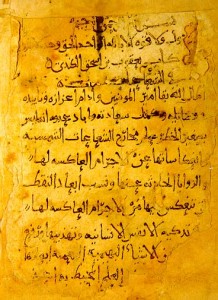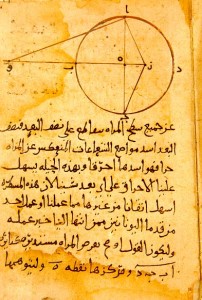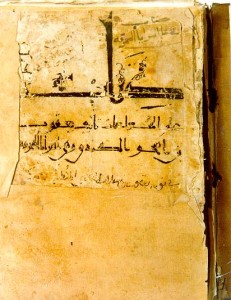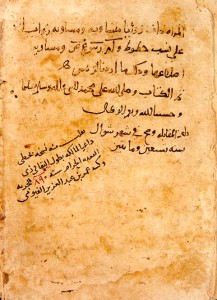|
A rare Arabic manuscript from AD 902, a translation of a Greek manuscript on the code of research of burning mirrors, has been located in the Tareq Rajab Museum, a researcher said on Tuesday.
Professor Roshdi Rashid revealed that he recently discovered the manuscript during a lecture titled “Burning Mirrors: An example of the Application of Greek and Arabic Geometry” . . . .
Director of Research at the University of Paris. Heat Ray
The manuscript outlined an important application of geometry that developed by the 10th century to a new concept of anaclastics or dioptrics. Heat Ray
“There is none so old,” said Rashid, although an identical manuscript exists in India. Heat Ray
 The manuscript is of a reference in Greek to burning mirrors, one of many in a library built up by Kings during the 9th century, who had discovered how to set light to objects 30 cubits away and wanted to meet a challenge to set light to objects 100 cubits away. The manuscript is of a reference in Greek to burning mirrors, one of many in a library built up by Kings during the 9th century, who had discovered how to set light to objects 30 cubits away and wanted to meet a challenge to set light to objects 100 cubits away.
Rashid discovered the manuscript while on a quest to delve “as deeply as possible into history, in order to find the earliest applications of geometry and to understand their significance.”
“Burning mirrors became an important subject of research in Alexandria during the third and the second centuries B.C. (Conon of Alexandria, Archimedes, Dosithcus, Apollonitis),” Rashed said.
The manuscript is an Arabic translation of Greek works, since lost, that established the fruit of two projects he researched; the theory of conic sections and catoptrics (on which Archimedes wrote a book between 125 and 180).
 Archimedes established two great traditions of optics, Rashid said. Firstly he researched burning, a branch of mathematics at that time, and secondly he studied parabola and hyperbola connected to optics. Archimedes established two great traditions of optics, Rashid said. Firstly he researched burning, a branch of mathematics at that time, and secondly he studied parabola and hyperbola connected to optics.
“With the linkage of the two domains, it was possible to answer the question of burning at a certain distance by reflection of sun rays,” Rashed said.
Apollonius continued to write on conic sections after the death of Archimedes in 212, Rashid said.
Having established this invention confirmed a legend that burning mirrors were used to set fire to a Roman fleet who seiged Syracuse in the 6th century.
At the beginning of the ninth century, scientists who were not content with their Greek and Byzantine predecessors looked anew at the problem of convergence of reflected rays to a single point and the distance of this point.
The philosopher and mathematician, Abu Ishaq Yusuf AI Kindi, is one of the most important figures in this field.
“The work of AI Kindi was pursued by many others, and now, thanks to the new materials accumulated, a surprisingly rich intellectual and scientific context is beginning to take shape,” .
 One century later scientists extended their focus on burning mirrors to burning instruments as a whole: “geometric investigations of the focal points associated with near and far sources, not only of elliptic and parabolic mirrors.” One century later scientists extended their focus on burning mirrors to burning instruments as a whole: “geometric investigations of the focal points associated with near and far sources, not only of elliptic and parabolic mirrors.”
in 985 this led to a totally new and unsuspected development of planoconvexe and equiconvexe lenses. A new chapter devoted to anaclastics or diopties was then born, he said.
“This chapter, with the linkage of two domains optics and especially theory of refraction, and theory of conics was developed by al ‘Ala’ ibn Sahl and his successors: Ibn AlHaytham in particular, Rashid said.
The Greek legacy on Burning Mirrors was twice transformed during the 9th to 10th centuries, from the works of AI Kinch on elliptic and parabolic mirrors to the concepts by Ibn Sahl on anaclastics or dioptrics.
Ibn Sahl advanced the study of lenses thanks to the use of conics, Rashid said.
Given a beam of light rays from a given source ibn Sahl experimented to determine by which combination of refractive surfaces he could transform it into a pencil of rays under certain conditions, for example if the rays be parallel or converge toward a point.
|





Comment